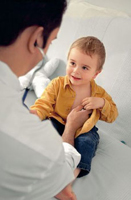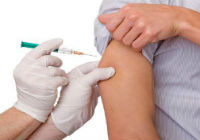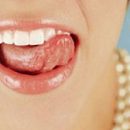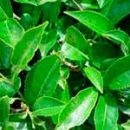Your baby has temperatures up to 38-39 ° C, malaise, weakness, headache, decreased appetite, nausea and vomiting? He is capricious, irritable and he has a dream? If all these symptoms are accompanied by characteristic pains in the right hypochondrium, perhaps the child picked up Botkin's disease.
Content
Causes of the disease
Everyone known such common children's infectious diseases, like measles, rubella, windmill, scarlet. Most often, kids are sick in kindergarten or primary classes.
But there are infections, in this case it will be about viral hepatitis "BUT" (infectious jaundice, diseases of Botkin), which are found in children more often than others and the flow of which has its own distinctive features.
Among infectious diseases, viral hepatitis ranks third after ARVI and acute intestinal infections, which are popularly called dirty hand diseases. As a result of this disease, the liver suffers first. Most often children are sick aged 3 to 7 years, while kids up to a year have immunity derived from mother.
The source of infection is only a person with obvious or erased forms of illness, as well as virosters. The transmission of the virus is carried out mainly by the contact-domestic pathway (through dishes contaminated by feces, personal hygiene objects), as well as with food and water. Transfer of infection with air-droplet did not find its confirmation.
Seasonality and frequency are characteristic of viral hepatitis. The greatest percentage of sick is registered in the autumn-winter period (September-January), the smallest - in the summer (July-August). Epidemic diseases of diseases are possible in children's institutions. After the suffered disease, resistant, lifelong immunity is formed.
Symptoms of hepatitis in children
The beginning of the first manifestations of the disease usually preceded the incubation period (on average from 15 to 30 days), when there are no external manifestations of the disease, but the virus already has its amazing effect on the body.
Then most children rises sharply temperatures up to 38-39°C and appear symptoms of intoxication: malaise, weakness, headache, decreased appetite, nausea and vomiting. Characteristic pain in the right hypochondrium, usually stupid, but sometimes pains can wear an attacking character, creating the impression of an attack of acute appendicitis and even gall-eyed illness. Baby become capricious, irritable, lose interest in games, study, they have a dream. Stomach disorders often arise: flatulence, constipation, less often diarrhea. 10% of patients detect light catarrhal phenomena: nasal congestion, throat redness, slight casing. After 1-3 days from the beginning of the disease, the body temperature is normalized and the symptoms of intoxication weaken, but still the overall weakness is preserved, the child may be sick. During this period, the disease is observed an increase in the size of the liver, sensitivity and pain in its palpation. Often marked darkening of urine (color of beer) and partial bleaching of feces (clay color). In the future, against the background of a distinct improvement in the overall condition and reduce complaints, children develop jaundice, which keeps within 7-14 days. Initially yellowed eye proteins and sky, then skin skin, torso.
If the baby fell ill: treatment, diet, environment
 Sick jaundice usually do not need to appoint drugs. At the heart of treatment - radional motor mode, healing nutrition, choleretic preparations, mineral waters, Verte polyvitamins.
Sick jaundice usually do not need to appoint drugs. At the heart of treatment - radional motor mode, healing nutrition, choleretic preparations, mineral waters, Verte polyvitamins.
Motor-mode restrictions depend on the health of the patient child and the severity of the disease. After extracting from the hospital, a gentle mode is assigned within 2-4 weeks; For a period of 3-6 months, children are exempt from physical education, and sports exercises are not recommended for 6-12 months.
Diet with viral hepatitis "BUT" must be a full, high-calorie. Non-fat varieties of meat (beef, veal, chickens) and fish (cod, pike perch, Navaga, Pike, etc.); Cottage cheese, milk, kefir. Fats are given in the form of creamy and vegetable oils (corn, olive, sunflower). It is recommended to use in the diet various types of porridge (rice, manna, oatmeal, buckwheat), bread, pasta, sugar, potatoes. In a daily diet, a sufficient amount of raw and boiled vegetables should be provided (carrots, cabbage, cucumbers, tomatoes, green peas, zucchini), greenery, fruit, juice. Extractive substances, refractory fats (fat, margarine), fat sausages, pork, canned meat, oily bird, sharp podlitsa, marinades, sharp cheeses, garlic, radish, radishes, chocolate, cakes, cakes, candy, sharp seasonings ( Mustard, pepper, mayonnaise), smoked, mushrooms, nuts, etc. Good to give the kids. Refectuously brewed tea with lemon, milk, honey, jam, as well as decoction of rosehip, fruit and berry juices, compotes, alkaline mineral waters. The presented recommendations are considered indicative.
A specific diet will appoint a attending physician depending on the age of the child, the severity and stage of the pathological process.
Children who have suffered with viral hepatitis "BUT", usually sent to dispensary observation. In the absence of residual phenomena (detected by clinically or under a laboratory study), surgested from the accounting; If there are residual phenomena, they are observed at least 3 months. At the heart of the prevention of viral hepatitis "BUT" It is necessary to follow the sanitary condition of the food enterprises, the organization of nutrition and water supply, removal of uncleanness and garbage. Of particular importance is the protection of food and water sources from possible pollution by feces. Children who had contact with the sick, in children's institutions after wasolation of the first illness should be under thorough clinical observation during the entire quarantine period - 35 days from the date of isolation of the last patient. Contact Children are made daily to inspection of the skin, the scool, necessarily marks the size of the liver, the color of urine and stool is fixed. To relieve flash of viral hepatitis "BUT" In the children's institutions it is very important to the timely use of immunoglobulins with a high content of antibodies to hepatitis virus "BUT". However, the cardinal prophylactic agent is considered hepatitis vaccine "BUT", the use of which is possible in the near future.









